Get Started with Data Visualization

The ability to collect data is one thing. The ability to leverage that data and present it in a coherent manner that resonates with your website visitors is something else entirely.
As you seek to improve your website's data visualizations, you may find the following tips and suggestions helpful.
Choose the Right Visuals
The visual formats you choose have a big impact on how well your audience connects with the data. For example, you could present the same data in table form and bar chart form, and you may see a 25 percent higher engagement on the latter. In many cases, people respond to the visual composition more than the data itself.
Having said that, take your time when choosing visuals. Understand which visualizations are best in which scenarios and when to avoid certain formats. This will take some time on the front end, but will pay off on the back end.
Contextualize the Data
How many times have you seen a flashy infographic or homepage display only to realize that it doesn't really contain much content at all? When a visual is heavy on graphics and light on information, some people call this "chartjunk."
"Data no matter how well presented visually needs a coherent narrative that adds context to the data and the recommendations based on that data," explains Liv Longley of Zoomdata.
In other words, you have to contextualize your website's data visualizations in order for them to be impactful.
Provide Interactivity
Interactive content is hugely popular right now. When appropriate, there's something to be said for making visuals interactive. Users enjoy the ability to click, drag and manipulate different elements. Not only does this enhance engagement, but it gives them a better chance to extract value from the data. CNN, for example, provides an interactive graph where people select their answers of how they'd like to spend money (home, ride, food, charity, vacation, entertainment and splurge items) with CNN tallying up the costs and providing the results.

Strategically Leverage Color
Color is something that can take an average visualization and transform it into a stellar one. The problem is that very few people utilize color in the proper way. There are lots of different tips and tricks to using color, but it ultimately comes down to three core concepts.
First, you have to understand the role of simplicity. Always use the least number of colors as possible. Secondly, colors have to be distinguishable from one another in order to be effective. Third, color should be used to draw attention to important elements.
Use the Right Tools
Data visualization isn't something you should attempt to do on your own. Even if you have formal training in the field, there's just too much time and effort involved. What you need to do is align your website with the right tools. Not sure where to start? Brian Suda over at Creative Bloq has a list of the 38 best tools (in his opinion).
There's a case to be made for sticking to your own creative imagination; however, don't underestimate the value in immersing yourself in industry trends and studying what others are doing. By checking out data visualization sites like Visually (responsible for the image on the right - click to zoom) or Chart Porn, you can identify new trends, see what works and avoid wasting your time. It's a game-changer.
Improve Your Data Visualizations
It's easy to get so caught up in the process of collecting data that you skimp on the process of synthesizing and visualizing the data into a format that's conducive to effortless consumption. This year, make sure you focus just as much energy on data visualization as you do on data collection. You'll find that this balanced approach has a positive impact on how you connect with your website visitors.
About the Author
Larry Alton is a professional blogger, writer and researcher who contributes to a number of reputable online media outlets and news sources. In addition to journalism, technical writing and in-depth research, he's also active in his community and spends weekends volunteering with a local non-profit literacy organization and rock climbing. Follow him on Twitter and LinkedIn.










